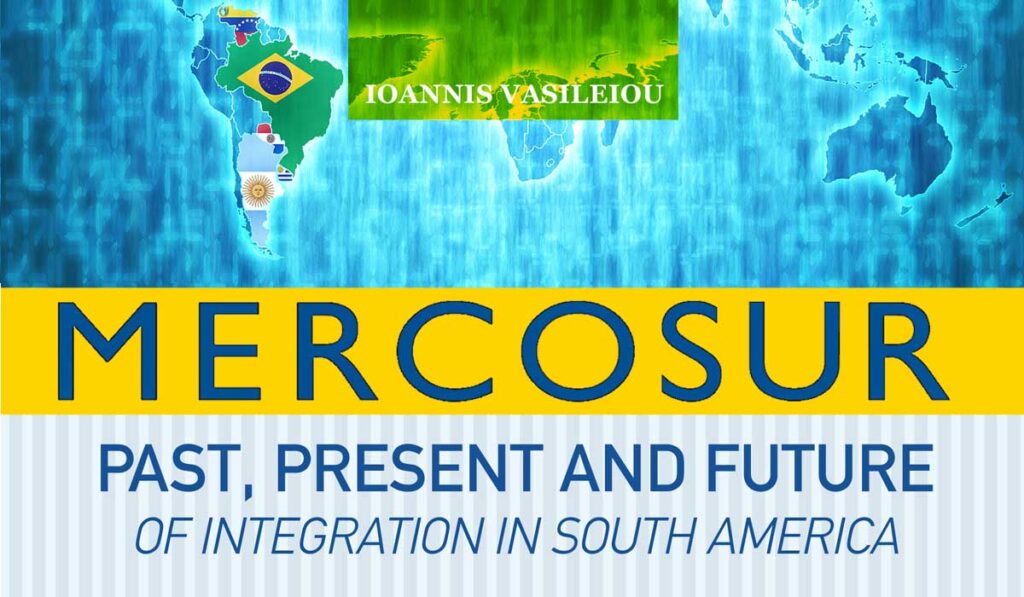Mercosur: Past, Present and Future of Integration in South America-Trade and Economic Relations with the European Union (2019) (Independently Published/Amazon KDP-Available through Amazon)
Mercosur has been the most significant initiative for a deeper and more constructive integration in South America. Despite the fact that it is mainly known as a common market, its contribution to social stability is absolutely notable. Ever since its establishment, Mercosur’s members faced numerous economic and sociopolitical crises. Nonetheless, contrary to more than a few pessimistic voices which were foreseeing its destruction, Mercosur managed to overcome all those serious tribulations and for the time being seems stronger than ever. The author’s target in terms of this book is not only to scrupulously examine Mercosur, but also to shed light on the outstandingly notable trade and economic relations between Mercosur and the European Union which aim at boosting economic growth and development in the context of both sides.
This book can be purchased through Amazon. Please see below:
Amazon Author Page (Amazon.com)
Books by Ioannis Vasileiou on Amazon Australia
Books by Ioannis Vasileiou on Amazon Brazil
Books by Ioannis Vasileiou on Amazon Canada
Books by Ioannis Vasileiou on Amazon India
Books by Ioannis Vasileiou on Amazon Mexico
Books by Ioannis Vasileiou on Amazon Netherlands
Books by Ioannis Vasileiou on Amazon Singapore
Books by Ioannis Vasileiou on Amazon Turkey
Books by Ioannis Vasileiou on Amazon UAE
Business site of Ioannis Vasileiou in English
Business site of Ioannis Vasileiou in Greek
TABLE OF CONTENTS
Introduction
Chapter 1: Mercosur: More than a Common Market-Structure and Functioning Towards Deeper Integration
Chapter 2: Mercosur and the European Union: Trade and Economic Relations With a View to Further Prosperity
Chapter 3: Concluding Remarks
Bibliography
